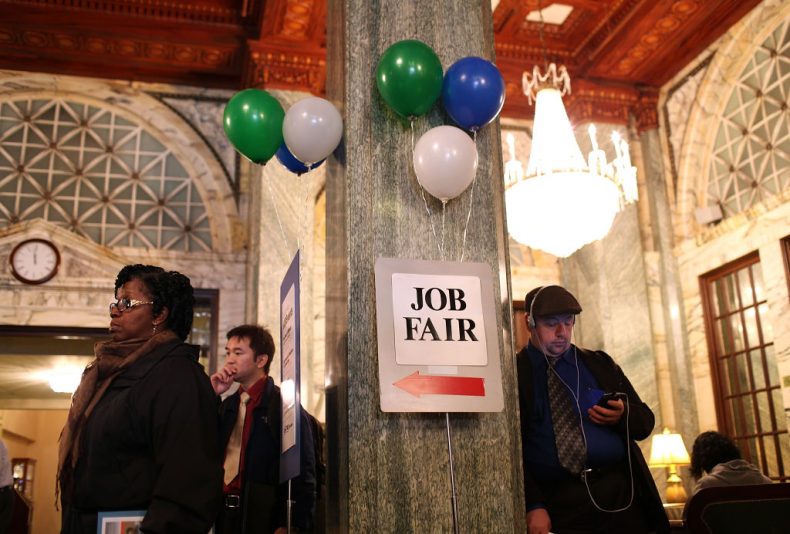
OAN’s James Meyers
8:08 AM – Friday, July 5, 2024
The economy grew via the addition of 206,000 jobs in June, but unemployment was still above 4% in the same month, according to the Labor Department on Friday.
The feds revised May jobs figures from the reported 272,000 jobs down to 218,000. For April, the government also revised the job numbers downward from the initial 165,000 to 108,000.
Signs of a weakening job market boosted investors’ hopes for rate cuts, although stocks were little changed in early trading.
Neil Dutta, an analyst at Renaissance Macro Research, urged the Fed to “get on with” slashing interest rates.
“Today’s employment report ought to firm up expectations of a September rate cut,” Dutta told Bloomberg News. “Economic conditions are cooling and that makes the trade-offs different for the Fed.”
Meanwhile, investors have been hoping for news in the labor market that will encourage the Federal Reserve to cut interest rates in its pursuit to limit inflation.
This comes after economists have been predicting that the labor market would lose momentum in the face of high interest rates orchestrated by the Fed, only to see hiring gains increase.
“The labor market has really proven the doubters wrong,’’ said Andrew Flowers, chief economist at Appcast, which uses technology to help companies recruit workers.
However, the higher borrowing costs caused by the Fed’s rate hike will weaken the job market, according to Flowers.
“Eventually,” he said, “it’s going to bend, but not break. The slow bite of high interest rates is going to moderate job growth.’’
Additionally, there have been many signs of a slowdown to the economy. The U.S. gross domestic product, which is the total of goods and services, increased at 1.4% from January through March, which is the slowest quarterly pace in almost two years.
Furthermore, consumer spending, which makes up close to 70% of all U.S. economic activity, increased only 1.5% last quarter after growing over 3% in each of the previous two quarters.
The number of advertised job openings has declined as well after hitting a record 12.2 million in March 2022.
“Businesses are hiring less amid cooler demand conditions,” said Bill Adams, chief economist at Comerica Bank.
“But they are also laying off fewer workers than before the pandemic. The job market is tight, so businesses don’t want to cut headcount today only to realize they need more workers tomorrow and then struggle to find them.”
In 2022 and 2023, the Fed raised its benchmark interest rate 11 times to try to conquer the worst rate of inflation in 40 years by lifting its key rate to its highest point in 23 years.
During a conference in Portugal, Fed Chair Jerome Powell claimed that further evidence that inflation is moving toward the Fed’s 2% target level would be required before policymakers would cut rates.
Stay informed! Receive breaking news blasts directly to your inbox for free. Subscribe here. https://www.oann.com/alerts

